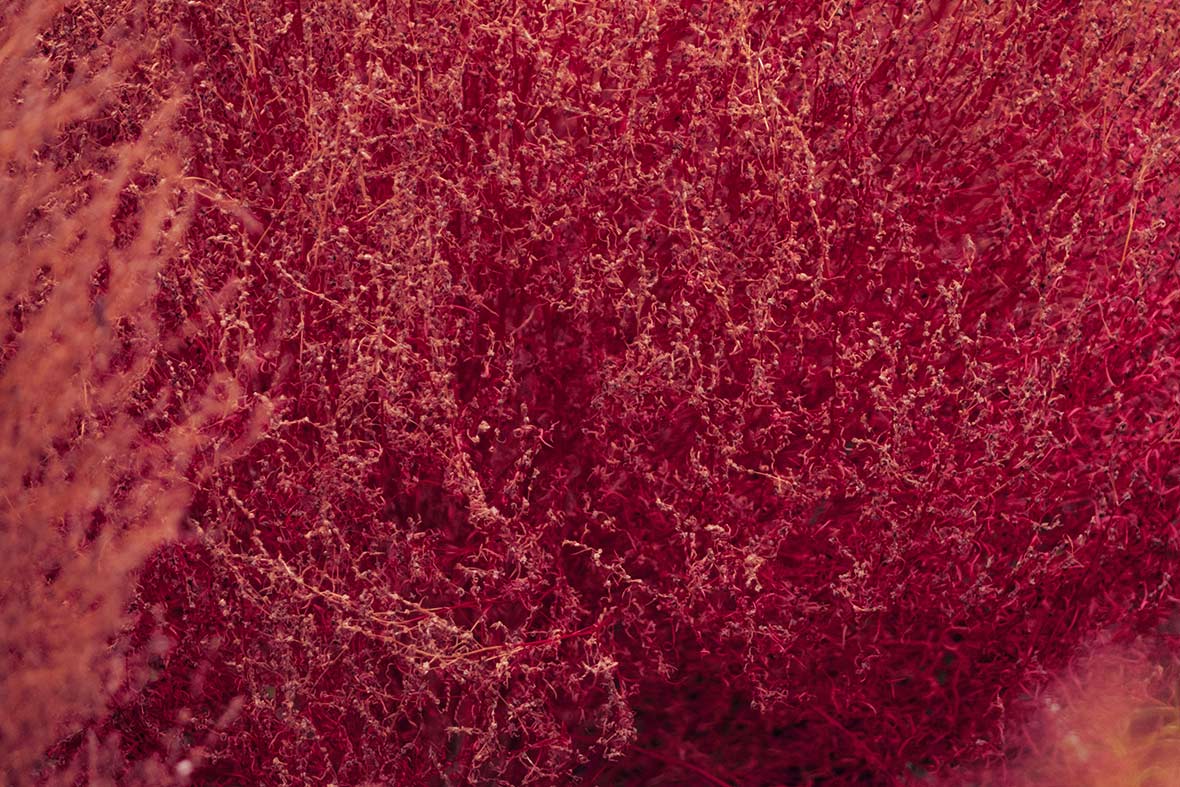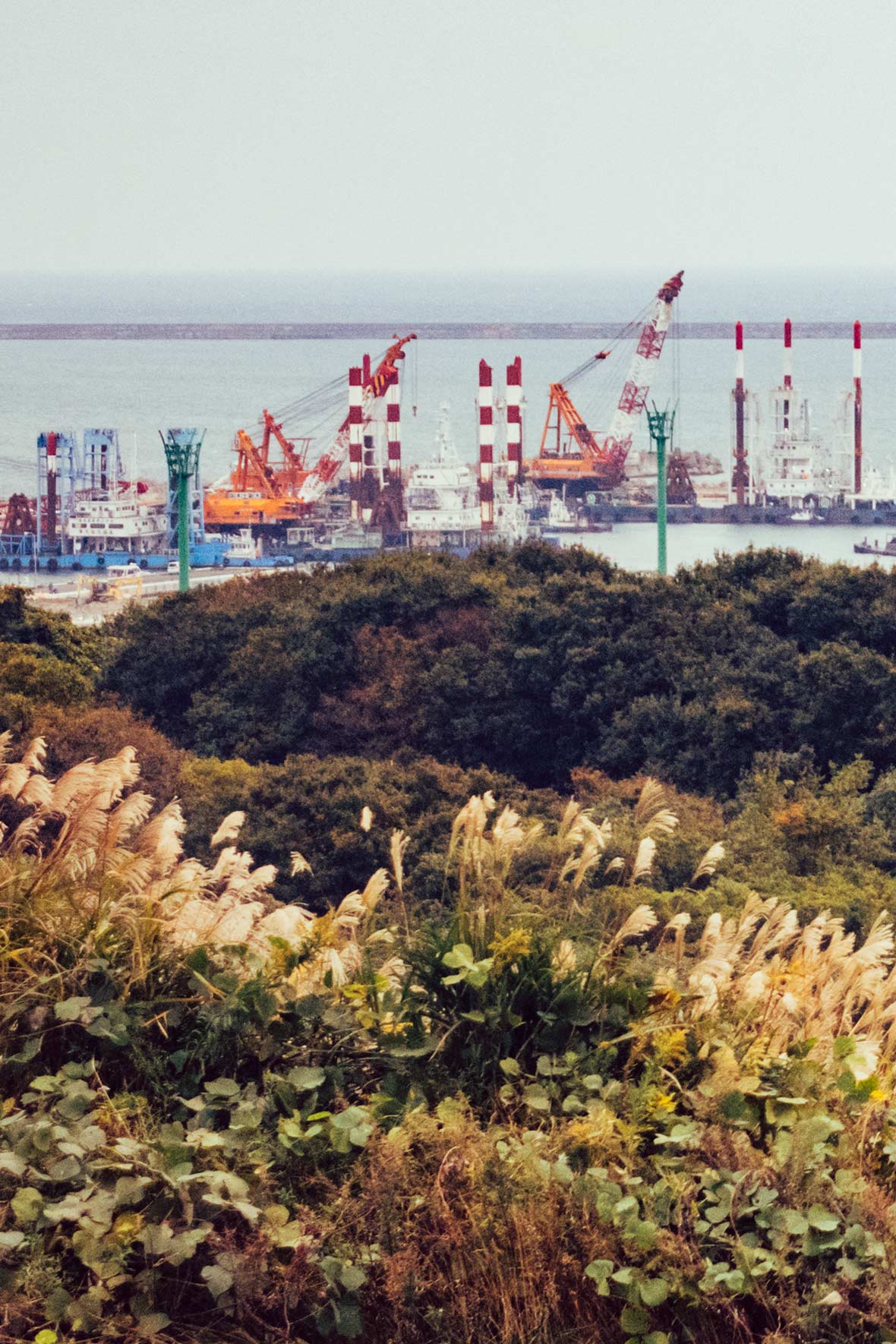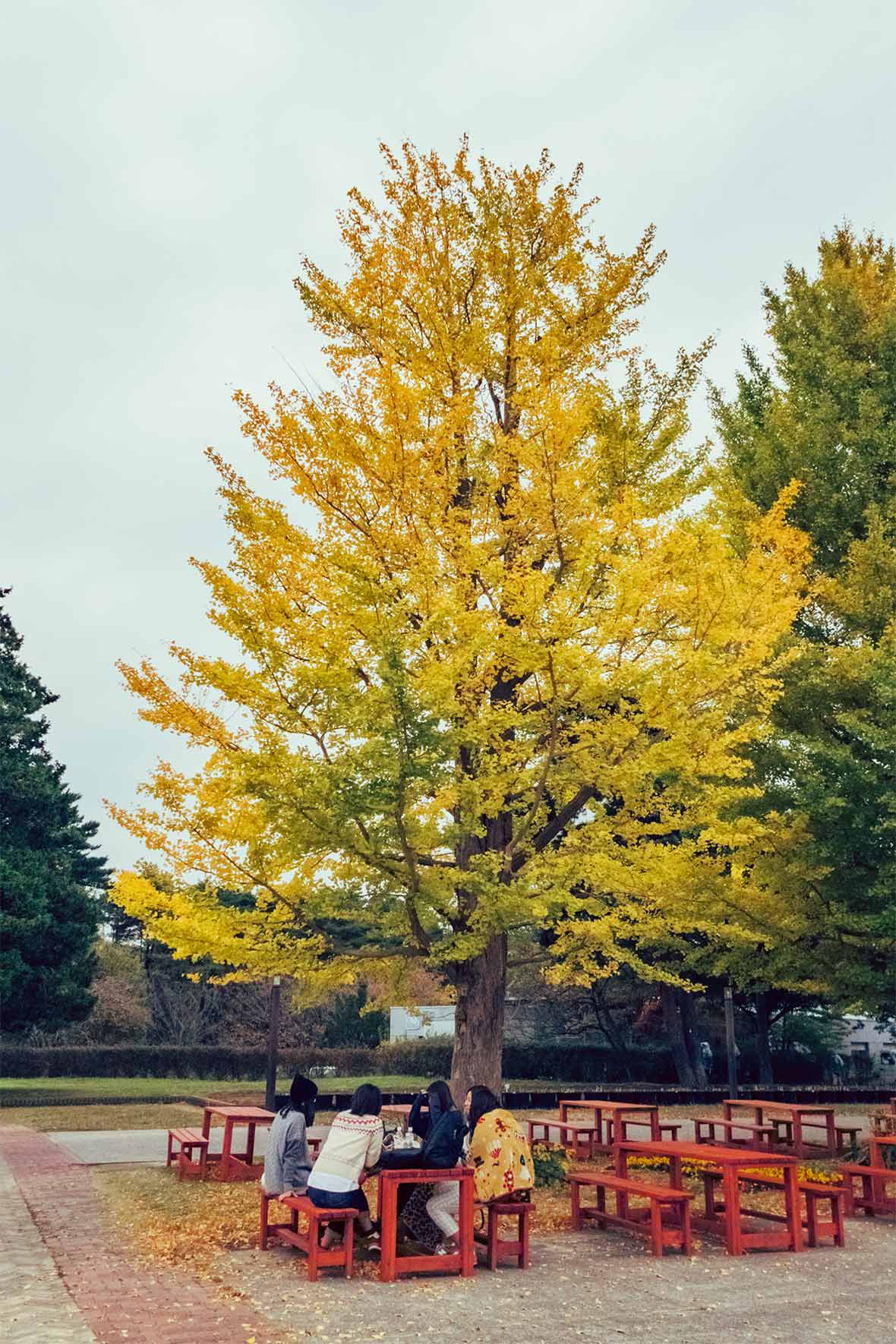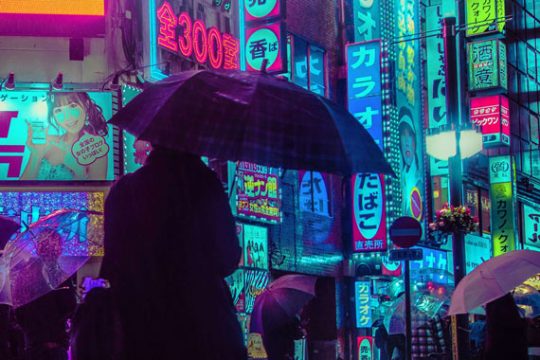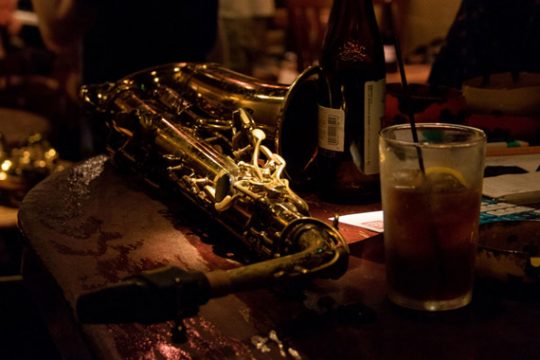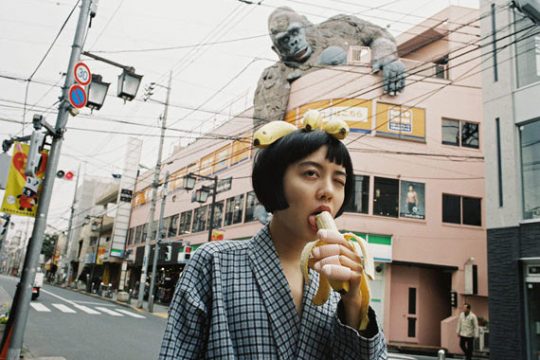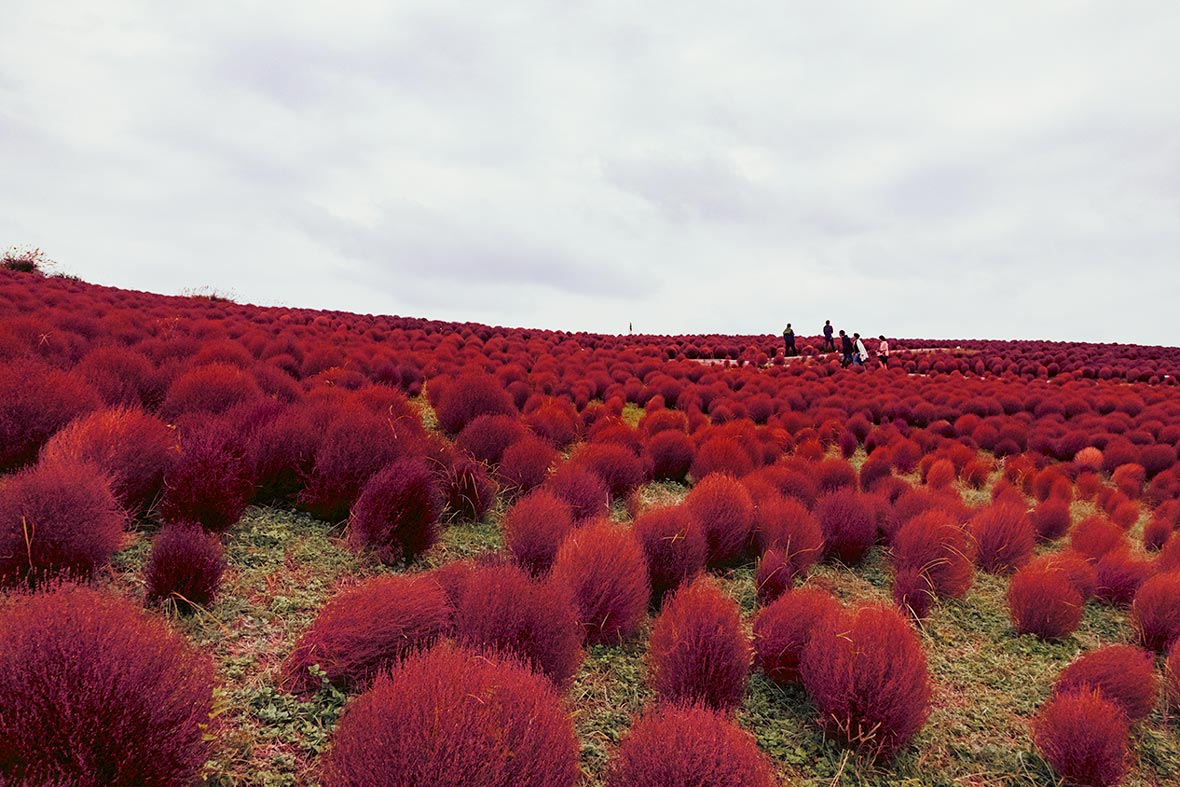
One hour north of Tokyo along the coastline of Japan’s largest island Honshu, the subtly named Hitachi Seaside Park is notable for its year-long displays of surreal nature scenes. The landscape changes psychedelic hues with the season changes. In the springtime, baby-blue flowers called Nemophila bloom all over the park in a phenomenon called “Nemophila Harmony”, for which Hitachi is famed. Later in the fall, small cotton-shaped shrubs called Kochia bloom, making for an even more bizarre landscape.
東京北部から1時間、日本最大の島、本州の海岸線沿いにそっけない名前のひたち海浜公園はあり、この世のものとは思えない自然の風景を一年中眺められることで有名です。風景は季節ごとにサイケデリックな色彩で変化します。春には、ネモフィラと呼ばれる小さな青い花が公園全体に咲き乱れ、「ネモフィラハーモニー」と呼ばれる幻想的な光景でひたちは有名です。しかし、秋には綿花のような低木のコキアが紅葉し、さらに風変わりな光景になります。
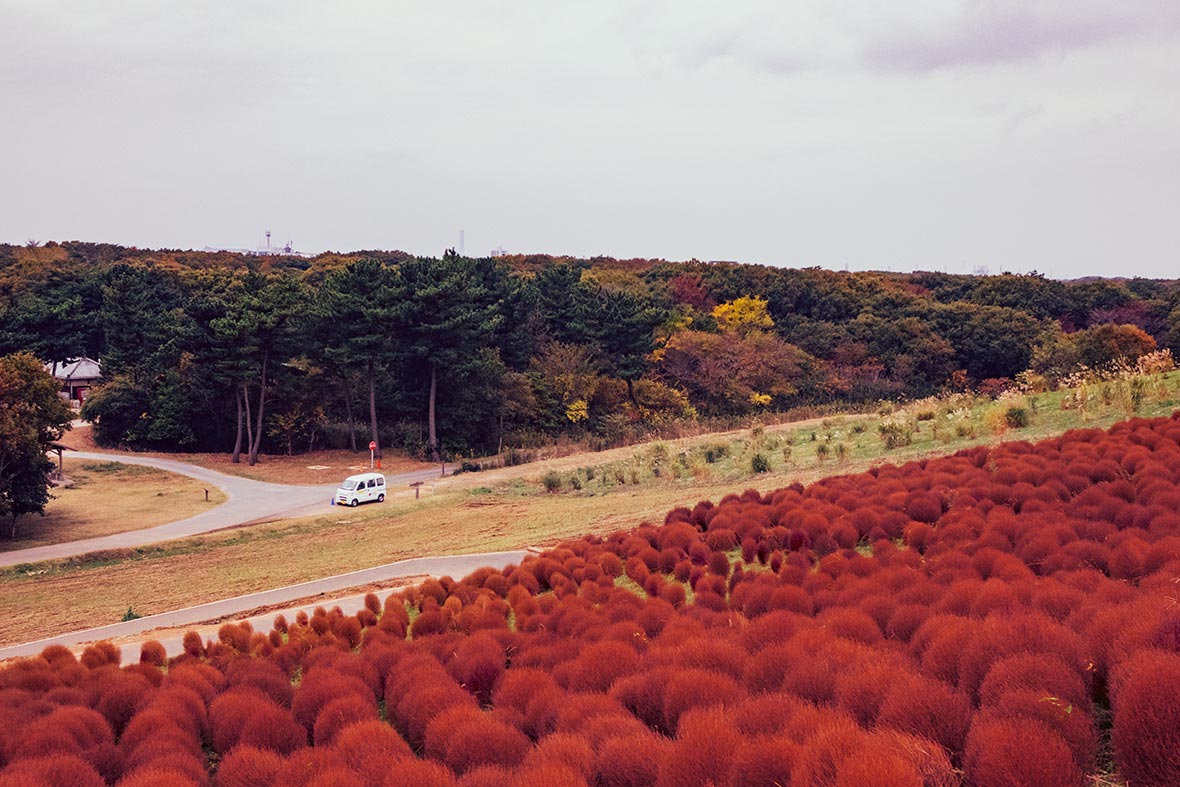
The Kochia, also known as the bassia scoparia, is a knee-high bush that is usually green most of the year. However, in October every year it changes from green to flaming gradients of crimson for a few weeks, peaking in mid-October and fading out by November. Photos taken in the Kochia fields during peak season look as if they were shot with infrared film.
コキアは「ホウキギ」としても知られていて、膝くらいの高さの低木で、通常一年の大半は緑色です。それが毎年10月になると、緑から燃えるような真紅のグラデーションに数週間で変化し、10月半ばにピークを迎え、11月までに消えてしまいます。ピークシーズンに撮られたコキアの写真は、まるで赤外線フィルムで撮影したように見えます。

The park itself is 470 acres and contains a wide range of different plant species. There are about 4.5 million blue Nemophila plants, one million daffodils and 170 different varieties of tulips. Fields of buckwheat, from which the region’s famed soba is made, curve alongside flowering fields.
公園自体の広さは470エーカーで、多種多様な種の植物があります。450万本のブルーネモフィラ、100万本のラッパスイセンと170種類のチューリップがあります。花畑沿いにカーブしたそば畑からは、地方特産のそばが作られています。
Every year, the phenomenon of koyo (trees changing colors) attracts city-dwellers to head north to Hitachi to enjoy the amazing intensity of the surrounding hills.
毎年紅葉の季節には、都市生活者達がひたちへやって来て、周囲の丘の驚くような色彩を楽しんでいます。
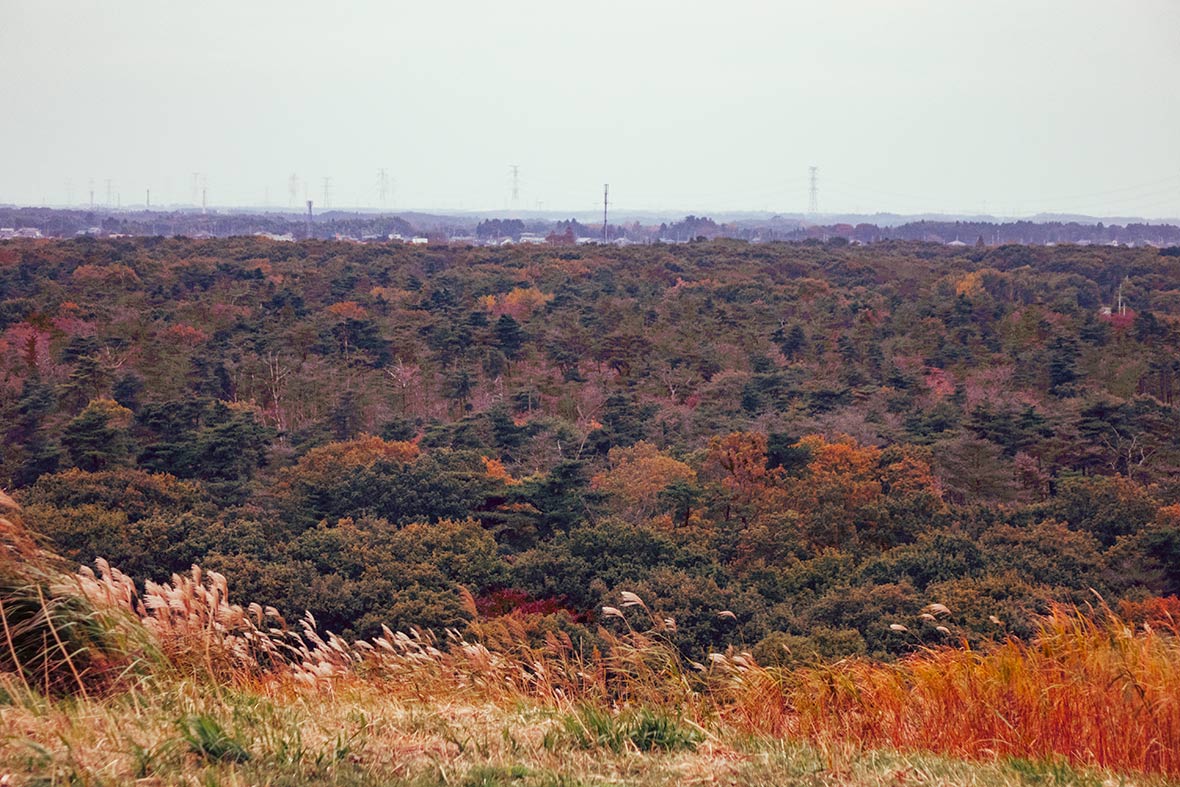
Address:
605-4 Onuma, Mawatari, Hitachinaka 312-0012, Ibaraki Prefecture
Japan
Phone: +81 29-265-9001
Website: hitachikaihin.jp

